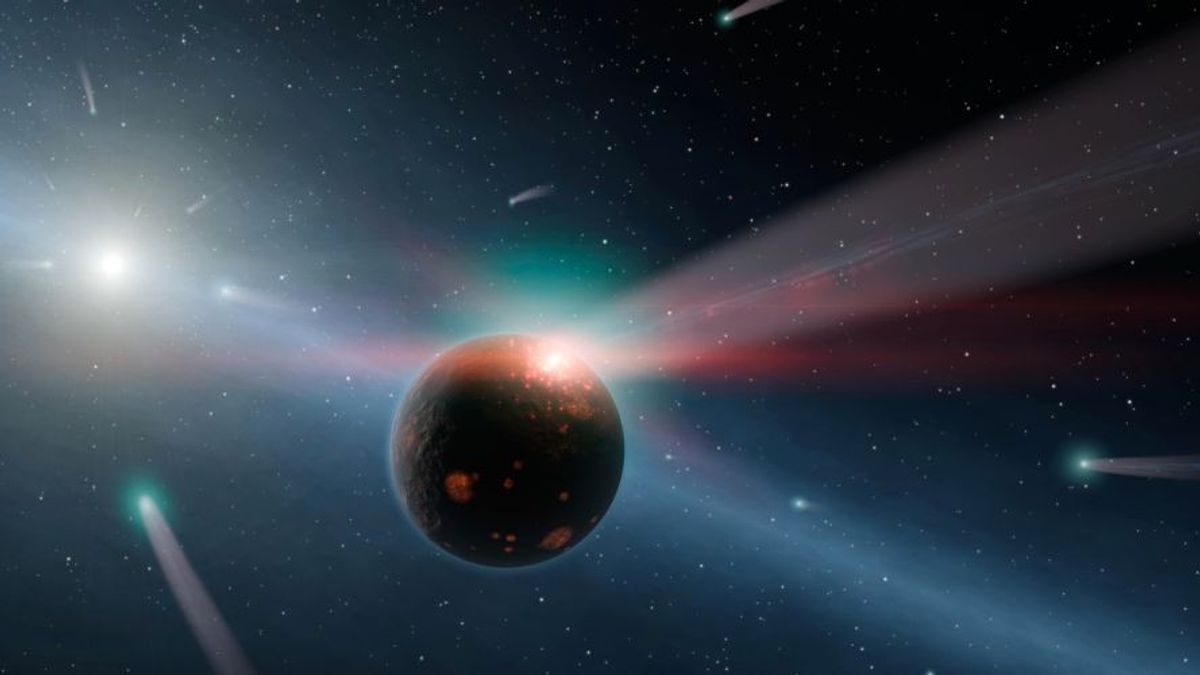JAKARTA - Comets are frequently seen and beautiful events in space, and a recent study outlines plans for how scientists can watch comets create in real-time.
As has been proven time and time again, the mysteries of space continue to fascinate. The planets in our Solar System have many stories to tell, distant galaxies hold many other secrets, and there is a constant push within the scientific community to uncover as many of these secrets as possible.
Thanks to technology that is constantly evolving, every day brings us closer to answering previously unsolvable questions. In 2021 alone, there will be many milestones in the world of space exploration.
Persevering to collect the first Martian rock samples to be returned to Earth, InSight created the first interior map of Mars, and Ingenuity became the first helicopter to fly on an alien planet. In that context, it is almost inconceivable to think about what we will achieve in the next 5, 10, or 50 years.
Thanks to a new study from the University of Chicago, researchers have now outlined a plan for astronomers to follow the comet's creation from start to finish. More specifically, this study explains how we can document the creation of comets that occur in Jupiter's orbit. As the paper's author, Darryl Seligman explains, "This would be an incredible opportunity to see a pure comet 'bringing to life' for the first time."
Comets and asteroids come from many places in our Solar System. There is a well-known asteroid belt near Mars, along with the Kuiper belt just beyond Neptune's orbit. One of the lesser understood destinations is the area between Jupiter and Neptune.
Between the two planets lies a group of 'centaurs' — large chunks of ice that date back to the early days of the Solar System. Every now and then, this centaur is pulled into Jupiter's orbit, streaked toward Earth, and transforms into a stunning comet that glides through space.
While this entire process is relatively unknown, Seligman believes there is an easy way to document it. In short, humans could send a spacecraft to Jupiter and keep it in its orbit.
Then, once the centaur enters orbit and finally leaves, the spacecraft can also leave Jupiter and fly with the centaur to witness its entire journey. That may sound like a far-fetched idea, but as this study explains, all the technology needed is already there.
NASA's Juno orbiter is currently orbiting Jupiter, and the Japanese spacecraft returned samples from the asteroid late last year. Time to line up too. It only takes about five years to get the spacecraft from Earth into Jupiter's orbit.
Scientists have confirmed another centaur will enter Jupiter's orbit in 2063. In addition, there is reason to believe that another 10 centaurs may also enter orbit within the next 40 years.
Along with a mission that's technically possible, Seligman also uses this research to redouble why it's so important to act on it. As he puts it, "This will yield a treasure trove of information about how comets move and why, how the solar system formed, and even how Earth-like planets formed."
It's not clear if or when a mission like this will actually happen, but we hope someone at NASA or another organization will listen to what Seligman has to say.
The English, Chinese, Japanese, Arabic, and French versions are automatically generated by the AI. So there may still be inaccuracies in translating, please always see Indonesian as our main language. (system supported by DigitalSiber.id)










